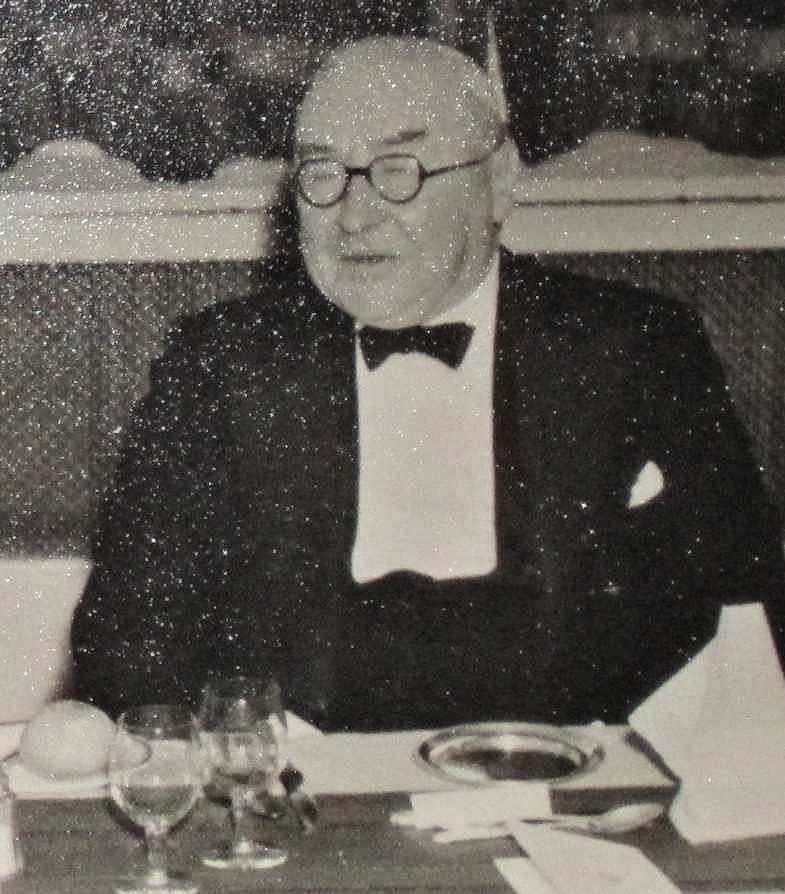
Major
GEORGE HENRY GOULD SMITH, M.B.E.
Royal Engineers
Lieutenant
Colonel Edward De Santis
Ó 2019.
All Rights Reserved.

Figure 1. Major G.H.G. Smith, M.B.E., R.E., c. 1939.
1. INTRODUCTION
The principal references
used in the preparation of this narrative were from a number of sources.
They include census records, official registries in the United Kingdom,
internet web sites (primarily Ancestry.com and Wikipedia), The London Gazette
and the officer’s service papers. All
sources are contained in the REFERENCE section at the end of the narrative and
are cited throughout in the ENDNOTES. Every
effort has been made to accurately portray the life and military service of
Major Smith. In this narrative
George Henry Gould Smith will be referred to as George Henry as a youth and then
as G.H.G. Smith later in his life.
The
Smith Family
George Henry Gould Smith’s great grandfather was one Francis Smith (1778-1844) of Monk’s Hall in Gosberton, Lincolnshire.[1] His grandfather was Captain George Smith, DL, JP who was born on the 5th of October 1820, the youngest son of Francis Smith. Captain Smith attained his military rank in 1861 as an officer in the Billingborough Company of the 2nd Lincolnshire Rifle Volunteers.[2]
George Henry Gould Smith’s father, George Smith a solicitor, was born on the 6th of March 1859. He married Helen Phyllis Allison, the daughter of William Allison, a solicitor from Louth, Lincolnshire. The Smiths were members of the Church of England. They had three children in addition to George Henry:
· Allison Gould Smith (1890-1917)
· Helen Phyllis Gould Smith (1892-1971)
· Francis (“Frank”) Gould Smith (1900-?)
George Henry Gould Smith, the oldest of the children, was born on the 22nd of February 1889 at Horbling, Folkingham, Lincolnshire.[3] Young George Henry was baptized in Horbling on the 7th of April 1889.
The 1891 Census of England[4] provides the information shown in the table below regarding the members of the Smith family. No specific address is given in the census for family’s home. Helen’s name is misspelled Ellen in the census.
|
Census
Place: Horbling, Lincolnshire. |
|||||
|
Name
and Occupation |
Relation |
Marital
Status |
Age |
Sex |
Birthplace |
|
George
Smith, |
Head |
Married |
32 |
Male |
Horbling,
|
|
Ellen
[sic] P. Smith |
Wife |
Married |
30 |
Female |
Louth,
|
|
George
Henry G. Smith |
Son |
|
2 |
Male |
Horbling,
|
|
Allison
G. Smith[5] |
Son |
|
4
mos |
Male |
Horbling,
|
|
Catherine
E. Fitzjohn, |
Servant |
|
23 |
Female |
Aldenham,
Hertfordshire |
|
Elinor
B. Fanthorpe, |
Servant |
|
21 |
Female |
East
Torrington, Lincolnshire |
|
Fanny
Holmes, |
Servant |
|
16 |
Female |
Walcot,
|
|
Census
Place: 42 Sunnyside, Horbling,
Lincolnshire. |
|||||
|
Name
and Occupation |
Relation |
Marital
Status |
Age |
Sex |
Birthplace |
|
George
Smith, |
Head |
Married |
42 |
Male |
Horbling,
|
|
Helen
P. Smith |
Wife |
Married |
39 |
Female |
Louth,
|
|
Allison
G. Smith |
Son |
|
10 |
Male |
Horbling,
|
|
Helen
R.G. Smith |
Daughter |
|
8 |
Female |
Horbling,
|
|
Francis
G. Smith |
Son |
|
6
mos |
Male |
Horbling, |
|
Emily
A. Rawding, |
Servant |
Single |
32 |
Female |
Horncastle,
Lincolnshire |
|
Sarah
Doughty |
Servant |
Single |
21 |
Female |
Great
Casterton, Rutland |
|
Florence
E. Martin |
Servant |
Single |
20 |
Female |
Grantham,
Lincolnshire |
Education
George Henry does not appear in the 1901 census as he was off to boarding school at that time. He was a student at Sandroyd School.[7] His brother Allison also attended Sandroyd School, entering a year after his older brother.
From 1903 to 1908 George Henry attended Winchester College.
In 1908 he matriculated at Magdalene College, Oxford University.
In 1910 he won 1st Honours in Classical Moderations[8]
and in 1912 he took 2nd Honours in Literae Humaniores[9]
at Magdalene College. While
attending college he apparently lived with his uncle, one John Neve Allison who
was a retired schoolmaster from Louth. The
1911 Census of England and Wales provides information regarding his uncle’s
home at 28 Dorset Road in Bexhill, East Sussex.
|
Census
Place: 28 Dorset Road, Bexhill |
|||||
|
Name
and Occupation |
Relation |
Marital
Status |
Age |
Sex |
Birthplace |
|
John
Neve Allison, |
Head |
Single |
34 |
Male |
Louth,
|
|
George
Henry Gould[10]
Smith, Student |
Nephew |
Single |
22 |
Male |
Horbling,
|
|
Allison
Gould Smith, |
Nephew |
Single |
20 |
Male |
Horbling,
|
|
Emma
Lidgard, |
Servant |
Single |
60 |
Female |
Binbrook, |
George Henry’s brother Allison also was living at this address making it a home for three bachelors and an elderly housekeeper.
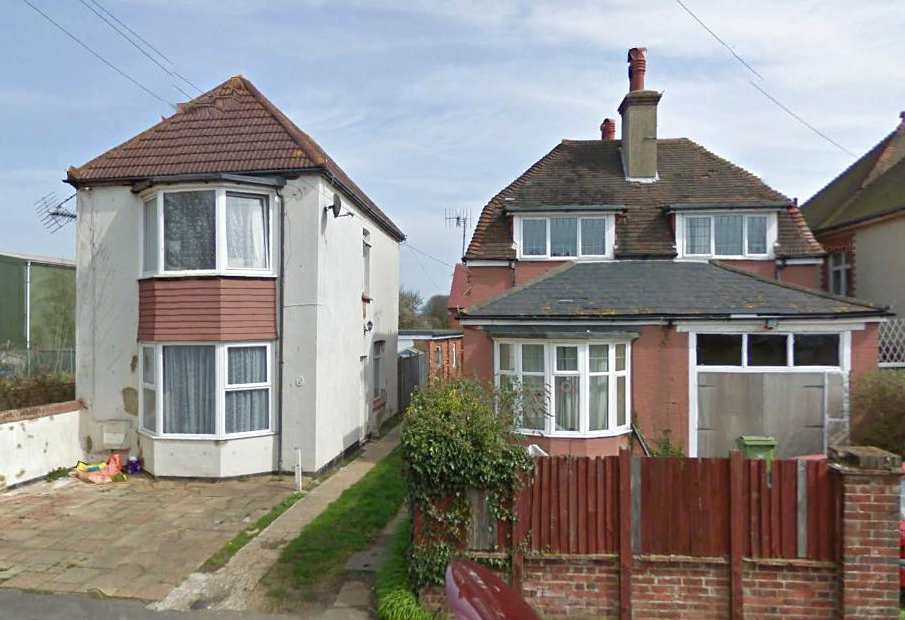
Figure 2. The Home of John
Neve Allison at 28 Dorset Road in Bexhill.
(Photograph courtesy of Google Earth)
The building at 28 Dorset Road, shown in the photograph above behind the red fence, was a rather modest affair consisting of a small two-story structure very close to a railroad track, the track being located to the left of the small white building.
It is somewhat perplexing to understand why both George Henry and Allison were living in East Sussex while they were attending college. It may be assumed that the Bexhill residence was where they were when the census was taken and that normally they were living on the Oxford and Cambridge campuses.
Allison Gould Smith had entered Winchester College from Sandroyd School
in 1904. In his last year (1909) he
stood on Dress for the College XV. He
won the senior classical scholarship at Magdalene College, Cambridge in 1909 and
took his degree with a second class in the Classical Tripos of 1912.[11]
|
|
Figure
4. Magdalene College, Oxford. |
Figure
5. Magdalene College, Cambridge. |
(Images courtesy of Wikipedia)
On the 15th of October 1912, while he was still studying at
Oxford, George Henry received an appointment as an Assistant Surveyor (2nd
Class) in the Post Office and on the 6th of December 1912 he was
appointed a Second Class Clerk in the Post Office.[12]
He completed his studies and received his Bachelor of Arts Degree in
1914.[13]
In August of 1914 Allison joined the Inns of Court Officers Training
Corps (OTC).[14]
No information was uncovered during this research to indicate that
Allison completed his degree requirements at Cambridge.
On the 12th of September 1914 Allison was commissioned a
Temporary 2nd Lieutenant in the 7th Battalion, The Loyal
North Lancashire Regiment as a Cadet from the OTC.[15]
The service of Allison Gould Smith will be discussed in detail in an
Addendum to this narrative. At this
point only the military service of G.H.G. Smith will be discussed in detail.
3. COMMISSIONING AND
TRAINING
Commissioning
On the 27th of February 1917 G.H.G. Smith was given a medical examination in connection with his application for a commission in the Royal Engineers Postal Service. As part of the medical examination George had to respond to a number of questions regarding his health. He indicated that:
· He had never suffered from any serious illness or injury.
· He was not presently suffering from any physical or mental infirmity or physical imperfection or disability.
· He never suffered from “fits” of any description.
· His near and distant vision in both eyes was good.
He was given a visual acuity test by the examining physician and his vision was found to be 6/6 in both eyes according to the Snellen acuity scale.[16]
Based on the results of this medical examination, G.H.G. Smith was found to be fit for service in the Army.[17]
In support of Smith’s application for a temporary commission, the Postmaster General wrote a letter, dated the 1st of March 1917, to the Director of Army Postal Services. At the time Smith had been working as an employee in the Secretary’s Office of the General Post Office in London. Smith’s commission would be as a Temporary 2nd Lieutenant in the Royal Engineers Special Reserve Postal Section and was meant to stand against one of the vacancies in that organization for subalterns authorized by the War Office.
On the 6th of March 1917 Smith was recommended for this appointment and was required to complete a formal application. As with all officer applications for a commission he was required to answer the following questions:
·
Date of birth:
22 February 1889
·
Marital status: Single
·
Nationality:
British by birth
·
Father’s nationality:
British by birth
·
Permanent residence:
Horbling, Folkingham, Lincolnshire
·
Present address:
Connaught Club, Marble Arch, London
·
Occupation:
Home Civil Service – Secretary’s Office, Post Office
·
Able to ride:
No
Smith also indicated that he had never previously applied for a commission.
On the 12th of March 1917 Smith’s appointment recommendation was submitted to the King and on the following day it was published in the London Gazette[18] with the date of appointment as a Temporary 2nd Lieutenant on probation with the Postal Section, Royal Engineers to take effect on the 15th of March 1917. However, his date of appointment subsequently was amended to the 9th of March 1917.[19]
Training
Since Smith’s duties in the Army were to so closely parallel the duties
that he performed in the post office in civil life, he required little training
in order to handle Army postal duties. Although
his service papers do not indicate any military training that he may have
received, he spent more than three months in the U.K. following his appointment
and prior to embarking for active service abroad.
During that period he may have been posted to the Royal Engineers Depot
at Chatham, Kent for some instruction in military procedures, but surely this
“training” would not have been intensive in nature.
Some of that time before embarkation may also have been spent by him in
acquiring his kit and getting his personal affairs in order.
4.
ASSIGNMENTS AND CAMPAIGN SERVICE
Service
in Salonika
Temporary 2nd Lieutenant George Henry Gould Smith, R.E. embarked at Southampton for service in Salonika on the 27th of June 1917. He was headed to what was known as the Macedonian Front. The Macedonian Front, also known as the Salonika Front, was a military theatre of operations of the Great War of 1914-1918 opened up as a result of an attempt by the Allied Powers to aid Serbia in the fall of 1915 against the combined attack of Germany, Austria-Hungary and Bulgaria. The expedition came too late and in insufficient force to prevent the fall of Serbia, and was complicated by the internal political crisis in Greece. Eventually, a stable front was established, running from the Albanian Adriatic coast to the Struma River, pitting a multinational Allied force against the Bulgarian Army, which was at various times bolstered with smaller units from the other Central Powers.[20] By the spring of 1917 there were seven British divisions in Macedonia including two corps headquarters. It was these units that Smith was to support with postal services. The order of battle of the British Army in Salonika at the time is as shown here:
XII Corps
·
22nd Division
·
26th Division
·
60th (2/2nd London) Division
·
1/1st Lothians and Border Horse
XVI Corps
·
10th (Irish) Division
·
27th Division
·
28th Division
·
1/1st Surrey Yeomanry
General
Headquarters Troops
·
7th Mounted Brigade
·
8th Mounted Brigade
· 16th Wing, Royal Flying Corps
Smith’s journey to Salonika took 18 days. He arrived at Cherbourg, France on the day after his ship sailed from Southampton. On the 8th of July he arrived at Taranto, Italy and on the 15th of July 1917 he arrived at Salonika and was officially listed “On Service.”[21] He joined the Base Army Post Office at Salonika for duty on the 21st of July 1917. The Base Post Office probably was located in the vicinity of the General Headquarters Troops area. The British Salonika Army at the time of Smith’s arrival was under the command of Lieutenant-General George Milne.[22]
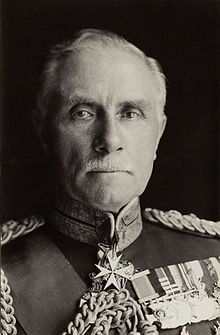
Figure
6. Sir George Milne (as a Field
Marshall)
(Photograph courtesy of Wikipedia)
On the 1st of December 1917 G.H.G. Smith was posted to the British XII Corps. On the 9th of December orders listed him at the Deputy Assistant Director of Postal Service (D.A.D.P.S.) of the XII Corps. “vice 2/Lt(A/Lt) R.A.C. Routh (to Egypt) without pay and allowances of higher rank while so employed.”[23] On the 15th of January 1918 Smith was granted the temporary rank of Lieutenant while employed as the D.A.D.P.S. for the British XII Corps, with this appointment being backdated to the 1st of December 1917, the date that he actually was posted to the position. On the 26th of February 1918 orders were published indicating that Smith would be the D.A.D.P.S. and “to be Acting Lieutenant without pay or allowances of that rank whilst so employed as of 30 November 1917.” And if this parsimonious behaviour of the command was not enough, on the 26th of March 1918 was told that he would be “Acting Captain without additional pay and allowances while D.A.D.P.S. 12th Army Corps as of 12 March 1918.”[24] One can only wonder what was going through Smith’s mind and how his enthusiasm for his work might have been affected when he was given more and more responsibility with only appointments to “acting” ranks as a reward. However, during the Great War of 1914-1918 it appears that duty was considered to be its own reward by many senior commanders.
Smith relinquished his appointment as the D.A.D.P.S. for the XII Corps on the 20th of August 1918 and reverted to “Regimental Duty.” He also relinquished his acting rank of Captain at this time, ceasing to be employed as the D.A.D.P.S. By returning to regimental duty it is assumed that he was employed as a staff officer at the Base Army Post Office where he reported for duty on the 24th of August.
There was little movement of the front line in Macedonia until the
major offensive in September 1918. On
the 7th of that month Lieutenant Smith was posted back to the XII
Corps headquarters and on the 21st of September he returned to
regimental duty at the Base Depot. This
movement probably was due to the collapse of the Bulgarians and an armistice
declared on the 30th September 1918.[25]
Throughout the time that Smith was in Salonika, Field and Stationary Army
Post Offices were in operation as well as a Base Army Post Office.
In May of 1917, prior to his arrival, there were 49 Post Offices open
This number rose to a peak of 54 in November of 1918 excluding the Base
Post Office. Some interesting facts
about postal operations in Salonika are presented by Chris Grimshaw in his work
(see web site reference). Chris
lists the following activities associated with the Royal Engineers Postal
Service:
As a postal officer with the General Post Office in London, Smith
certainly would have been acquainted with the procedures involved in dealing
with the requirements listed above, or if he was not, he would quickly have
learned how to deal with them.
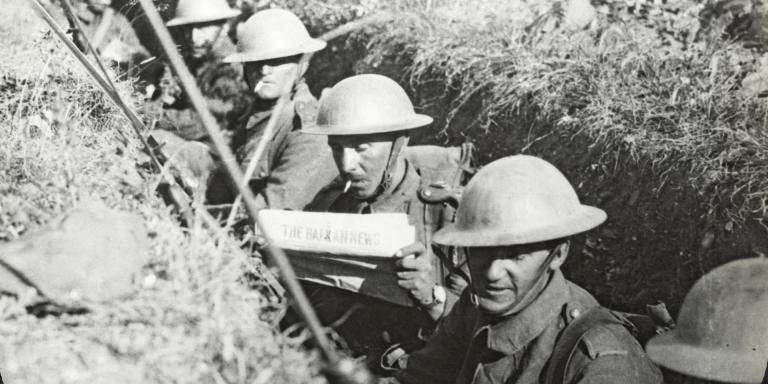
Figure
7. A British Soldier in the Trenches
Reading the Balkan News Probably Delivered by the Royal Engineers Postal
Service.
(Photograph courtesy of the National Army Museum).
On the 19th of October 1918 G.H.G. Smith was posted to Kavalla
to establish Army Post Office Number 5X23 and on the 22nd of October
he was appointed to be an Acting Major (with the pay and allowances of a
Lieutenant!) while holding the appointment again as the Deputy Acting Director
of Postal Services. As shown in the
map below, Kavalla was located on the coast to the east of Salonika.
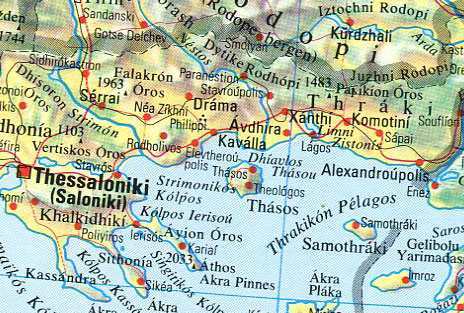
Figure
8. Map of the Coast Line between
Salonika and Alexandropoulos.
(Image courtesy of Wikipedia)
On the 26th of October 1918, presumably after opening the
military post office at Kavalla, Major Smith was posted from the Base
Headquarters at Kavalla to Dedeagatch, Greece for duty there.
He arrived at Dedeagatch on the 2nd of November to establish
Army Post Office 5X9.
An entry in Smith’s Casualty Form shows that on the 16th of
November 1918 he moved to Army Post Office 5X24 from APO 5X3, but no geographic
location is given for either of these post offices.
It may be assumed that his responsibility was to open these two new post
offices in support of British troops stationed in the Balkans.
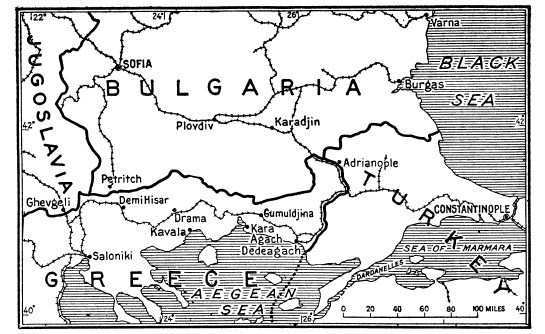
Figure
9. Map of Bulgaria and Greece
Showing Dedeagatch.
(Map courtesy of Google.com)
Service
in Russia
Major Smith’s service in Salonika ended on the 13th of
December 1918 when he embarked for Constantinople.
His stay there was a short one, as he disembarked for duty at the British
headquarters in Batoum, Turkey (later Russia) on the 23rd of
December. There he began his service
with elements of the British Salonika Army that had been sent there during the
Russian Civil War between the Red and White Russians.
Churchill's desire to intervene in the civil war in support of the White
Russians against the Bolsheviks led to the deployment of British troops to the
Caucasus. Specifically, the British Salonika Army (later dubbed the Army of the
Black Sea) was dispatched to Georgia in late 1918 and early 1919.
Parliamentary discussion regarding this move was put to Mr. Churchill by
and a Mr. Swan who asked the Secretary of State for War whether “British
troops remain at Baku or at Batoum; whether it is at the wish or request of or
on an understanding with the Allied Council or any Russian government that
British troops remain at or were withdrawn from these places; what expenditure
is being incurred weekly in this connection; and whether any assurance can be
given as to the date when British troops in Russia will be withdrawn and
returned home?”
Mr. Churchill replied to Mr. Swan that “no
British troops are at Baku or in any other part of the Caucasus except Batoum on
the Black Sea. A brigade of British
and Indian troops is temporarily remaining at Batoum at the request of the
Foreign Office to prevent serious local disorders occurring at this particular
moment.”[26]
On the 11th of February 1919 Major Smith was appointed Deputy
Assistant Director of Postal Services at the Headquarters Base in Batoum to
complete that establishment upon its formation.
He retained his acting rank and transferred with pay and allowances as a
Lieutenant while he was employed at Batoum.
The British occupied Batoum (or Batumi), Turkey
in 1919, which later was ceded to Georgia, Southern Russia in 1920. The
expansion of Batumi began in 1883 with the construction of the
Batumi-Tiflis-Baku railway completed in 1900 and by the finishing of the
Baku-Batumi pipe-line. Henceforth Batumi became the chief Russian oil port in
the Black Sea. The town expanded to an extraordinary extent and the population
increased very rapidly: 8,671 inhabitants in 1882, and 12,000 in 1889. By 1902
there were 16,000 in the port, 1,000 worked in the refinery for Baron
Rothschild's Caspian and Black Sea oil company. On 3 March 1918, the Treaty of
Brest-Litovsk gave the city back to the Ottoman Empire; unrest led to Turkish
forces re-entry in April 1918, followed by British forces in December, who
stayed until July 1920. Kemal Atatürk then ceded it to the Bolsheviks, on the
condition that it be granted autonomy, for the sake of the Muslims among
Batumi's mixed population.
In May of 1919 George Henry Gould Smith was appointed a Member of the
Military Division of the Order of the British Empire (M.B.E.) for valuable
services rendered in connection with military operations in the Balkans.[27]
On the 15th of July 1919, while at the Batoum Base, Smith
received orders to return to the U.K. for demobilization and on the 20th
of July he disembarked at Constantinople on his way home.[28]
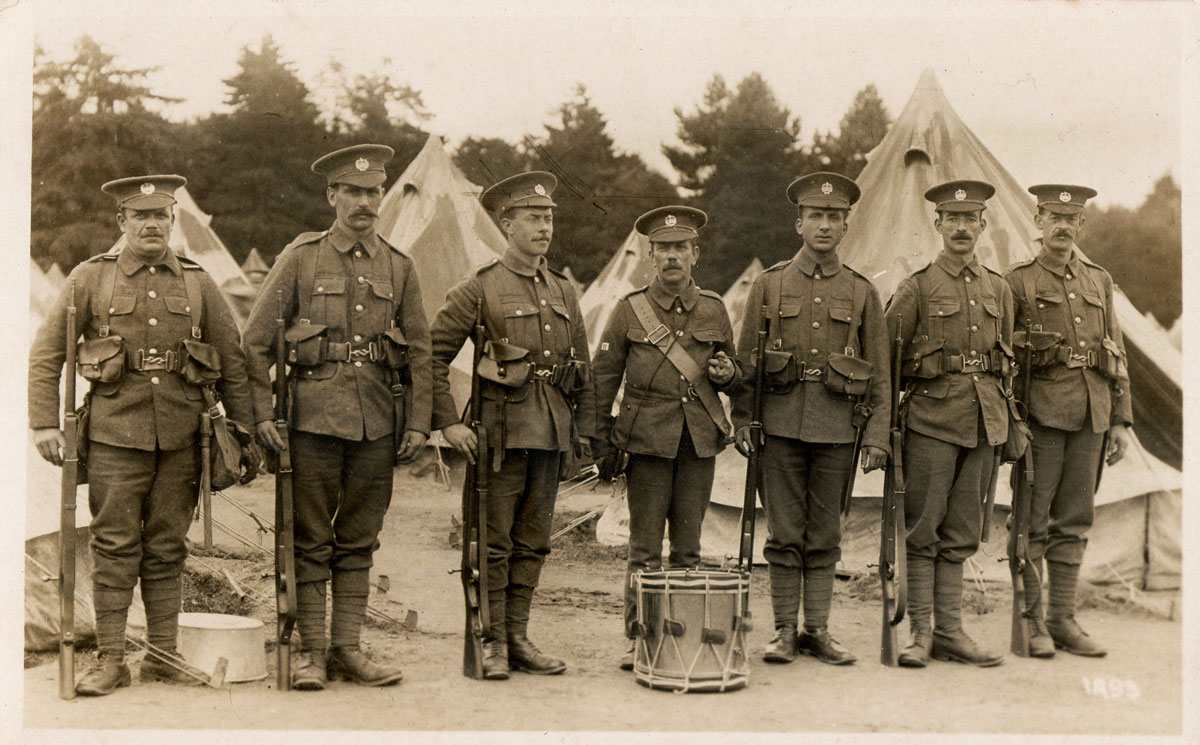
Figure 10.
Troops of the Essex Regiment at Batoum.
(Photograph courtesy of Wikipedia)
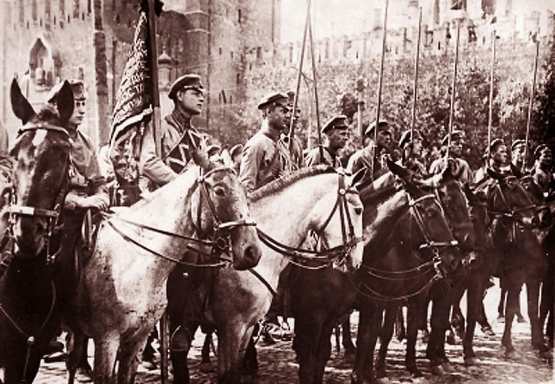
Figure 11. Russian Cavalry
at Batoum.
(Photograph courtesy of Wikipedia)
On the 27th of July Smith disembarked at Chanak, Turkey from
Constantinople aboard R.M.L. Magdalena.
He embarked from Chanak, bound for
Taranto, Italy on the 5th of August 1919 and arrived in the U.K.
about the middle of September.
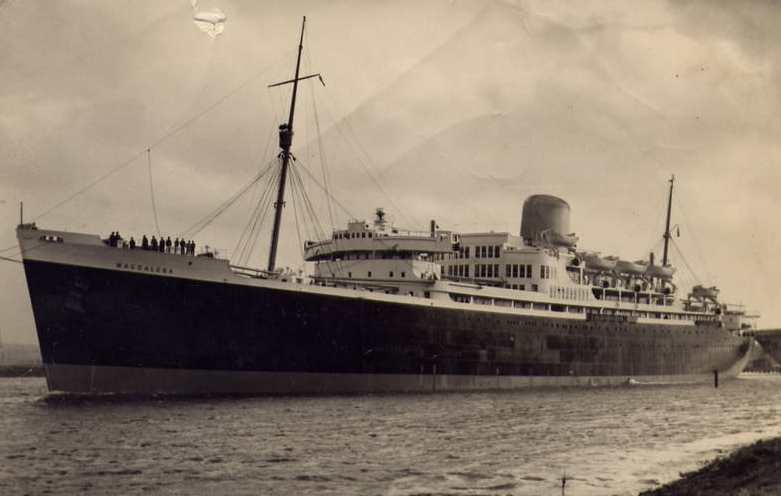
Figure 12.
R.M.L. Magdalena.
(Photograph courtesy of Wikipedia)
Smith’s Protection Certificate (Army Form Z. 3) prior to his
demobilization was issued to him on the 15th of September 1919.
His acting rank was shown as Major and his substantive rank as
Lieutenant. His Dispersal Unit (10B)
was at the Crystal Palace, where it seems that many officers were being
demobilized at the time. The Crystal
Palace was the structure where the Great Exhibition of the Works of Industry of
All Nations or The Great Exhibition, was held in Hyde Park.
The building was designed by Joseph Paxton with support from structural
engineer Charles Fox, the committee overseeing its construction including Isambard Kingdom Brunel.[29]
The building was architecturally adventurous, drawing on Paxton's
experience designing greenhouses. In
fact, it looked like a large greenhouse. It
took the form of a massive glass house, 1848 feet long by 454 feet wide and was
constructed from cast iron-frame components and glass made almost exclusively in
Birmingham and Smethwick. The Crystal Palace was considered an architectural
marvel, but also an engineering triumph that showed the importance of the
Exhibition itself. The building was
later moved and re-erected in 1854 in enlarged form at Sydenham Hill in south
London, an area that was renamed Crystal Palace. It was destroyed by fire on 30
November 1936.
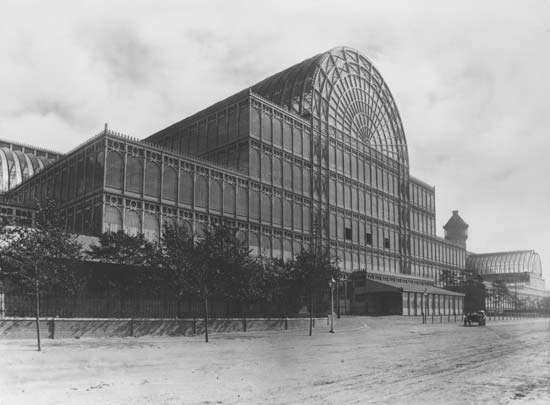
Figure
13. The Crystal Palace.
(Photograph courtesy of Wikipedia)
Smith’s Army Form Z. 3 also noted that his Theatre of War had been
Salonika and that the unit in which he had last served was the R.E. Postal
Service. He was noted to be in Civil
Service in civil life, born in 1889, single and his Medical Category was “A”
indicating that he was “able to march,
see to shoot, hear well and stand active service conditions.”
Smith was demobilized on the day after his Army Form Z. 3 was issued to
him and he was to relinquish his commission.
By the 7th of November 1919 Smith was back in his home town of
Horbling, Lincolnshire.
On the 15th of October 1920 Lieutenant G.H.G. Smith was
granted the rank of Major, his appointment being submitted to the King and
published in the London Gazette of this date.
He applied for his British War Medal and Victory Medal on the 28th
of September 1922 and the medals were mis-sent to him at Horbling.
The medals were returned to the Army on the 6th of November
1922 and were then immediately re-sent to Smith at his proper address at the
Connaught Club, 75 Seymour Street, Marble Arch, London W.2.
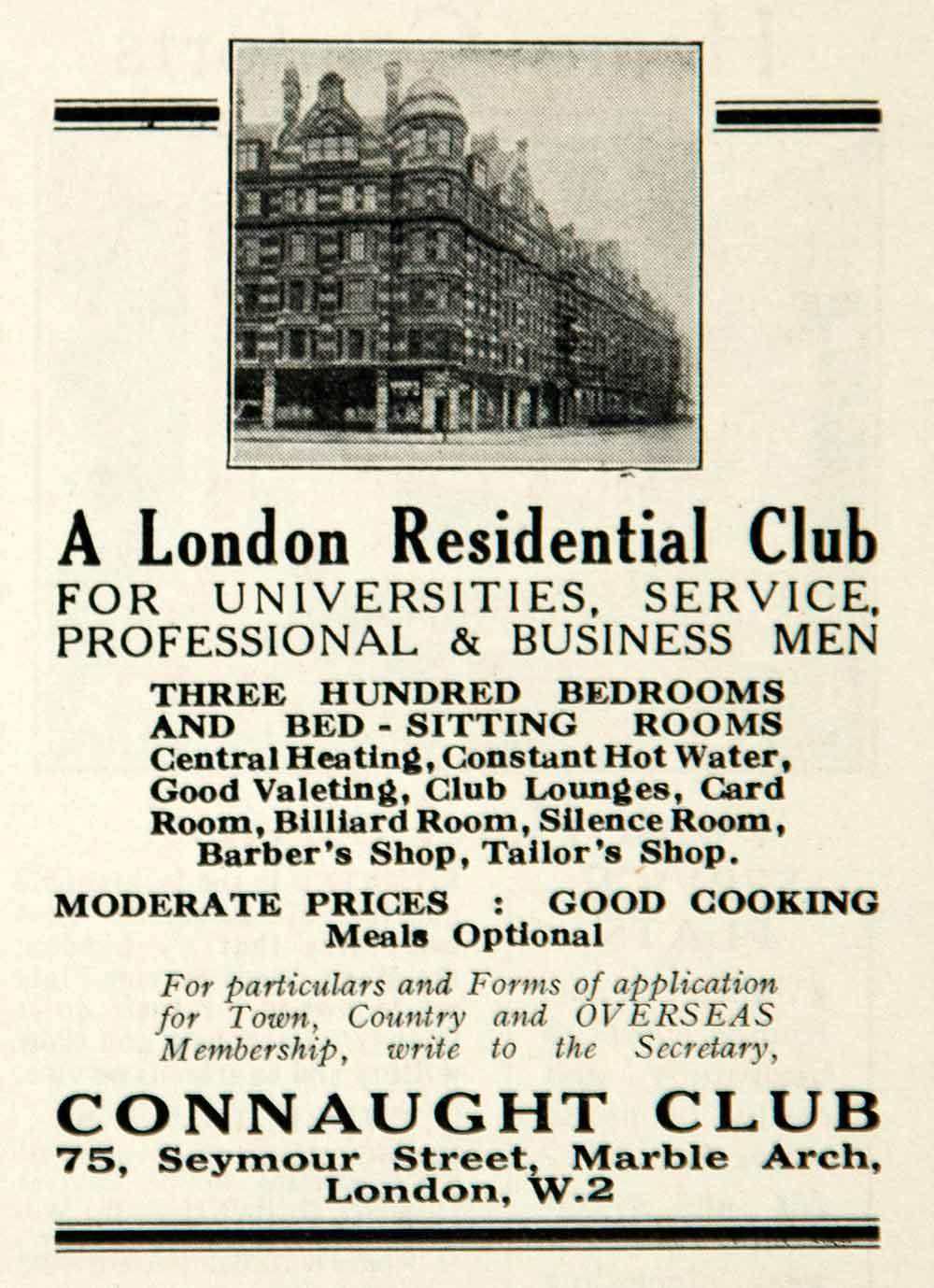
Figure
14. A Flyer Advertising the
Connaught Club.
(Image courtesy of Wikipedia)
Now with a London address, Smith returned to his duties at the General
Post Office. In 1924 be became the
Private Secretary to the Postmaster General and in 1927 he was appointed Chief
Inspector of Postal Traffic. In 1937
he was promoted to the position of Assistant Secretary to the Director of Postal
Services. His connections in the
General Post Office prior to the Great War and his considerable experience with
starting up Army post offices in the Balkans surely helped him to attain these
rather prestigious positions within the G.P.O.
Smith’s war had not been one filled with danger or excitement.
He played a very important role in getting mail to the troops in the
field, which of course has always been a most important morale booster in all
wars. His living accommodations in
the Balkans surely were not luxurious and he was made to relocate many times in
support of the forces operating at or near Salonika, Kavalla, Dedeagatch and
Batoum. He did all this with the pay
and allowances of a Lieutenant while performing the duties of a Major as the
Deputy Assistant Director of Postal Services in these various locations.
His service papers do not indicate that he ever complained about the
parsimonious attitude of the Army regarding his pay while performing duties many
levels above his pay grade. His
attitude in this regard can only be considered to be commendable and patriotic.
He certainly was not a self-serving individual.
*
* *
The life and military service of Major George Henry Gould Smith. M.B.E.,
R.E. has been presented above in narrative form based on the author’s
interpretation of the events in his life as they have been found in various
documents relating to him. In the
following sections significant events in his life will be presented in tabular
form for ready reference by the reader and for greater ease in determining where
he was and what he was doing at a specific time in his life.
*
* *
5.
PROMOTIONS AND APPOINTMENTS
a. Promotions: George Henry Gould Smith received the following promotions during his time in the Army:
Date of Promotion or Appointment |
Rank
or Position |
|
9 March 1917 |
Appointed a Temporary 2nd Lieutenant on probation in the Postal Section, Royal Engineers. |
|
9 December 1917 |
Appointed an Acting Lieutenant, R.E. without the pay and allowances of this rank. |
|
15 January 1918 |
Granted the temporary rank of Lieutenant, R.E. |
|
26 February 1918 |
Reverted to the acting rank of Lieutenant, without the pay and allowances of this rank. |
|
26 March 1918 |
Appointed Acting Captain, R.E., without the additional pay and allowances of this rank. |
|
20 August 1918 |
Relinquished the acting rank of Captain, R.E. and reverted to the rank of Lieutenant. |
|
20 October 1918 |
Appointed Acting Major, R.E. with the pay and allowances of a Lieutenant. |
|
16 September 1919 |
Demobilized with the acting rank of Major and the substantive rank of Lieutenant. |
|
15 October 1920 |
Granted the substantive rank of Major, R.E. |
NOTE: It is astonishing
in Smith’s case to see how he was bounced up and down in rank, given
additional responsibilities, yet was denied the pay and allowances that should
have accompanied his rank and responsibilities because of the penurious policies
of the War Office.
b. Appointments: Major Smith received the following appointments during his time in the Army:
Date of Appointment |
Position |
|
21 July 1917 |
Royal Engineers Postal Service staff officer, Base Army Post Office, Salonika. |
|
9 December 1917 |
Deputy Assistant Director of Postal Services, British XII Corps, Salonika. |
|
24 August 1917 |
Royal Engineers Postal Service staff officer, Base Army Post Office, Salonika. |
|
7 September 1917 |
Royal Engineers Postal Service staff officer, British XII Corps, Salonika. |
|
22 October 1917 |
Deputy Assistant Director of Postal Services, British Forces, Salonika. |
|
11 February 1919 |
Deputy Assistant Director of Postal Services, Headquarters Batoum Base. |
a.
Military Training: As
indicated in the narrative, it does not appear that Smith received any
significant military training. The
time from his commission to his departure for Salonika was approximately 3
months and 18 days. This would have
been enough time for some introductory training in military customs and
procedures as well as time to procure his kit for active service.
Based on the duties to which he would be assigned it is not difficult to
assume that his work experience in civil life would be adequate for him to
perform as a staff officer in the Royal Engineers Postal Service.
b. Qualifications: Smith earned the following qualifications prior to, during and after his time in the Army.
Date |
Qualification |
|
15 October 1912 |
Assistant Surveyor (2nd Class) in the Post Office. |
|
6 December 1912 |
Second Class Clerk in the Post Office Secretary’s Office. |
|
1914 |
Bachelor of Arts from Magdalene College, Oxford University. |
|
1 December 1917 |
Deputy Assistant Director of Postal Services, Royal Engineers. |
|
1924 |
Private Secretary to the Postmaster General. |
|
1927 |
Chief Inspector of Postal Traffic. |
|
1937 |
Assistant Secretary to the Director of Postal Services. |
Major Smith received the following medals, awards and decorations during his time in military service:[30]
|
Date |
Medal
or Award |
|
May 1919 |
Member of the Military Division of the Order of the British Empire (M.B.E.) |
|
28 September 1922 |
British War Medal. |
|
28 September 1922 |
Victory Medal with Mention in Despatches. |
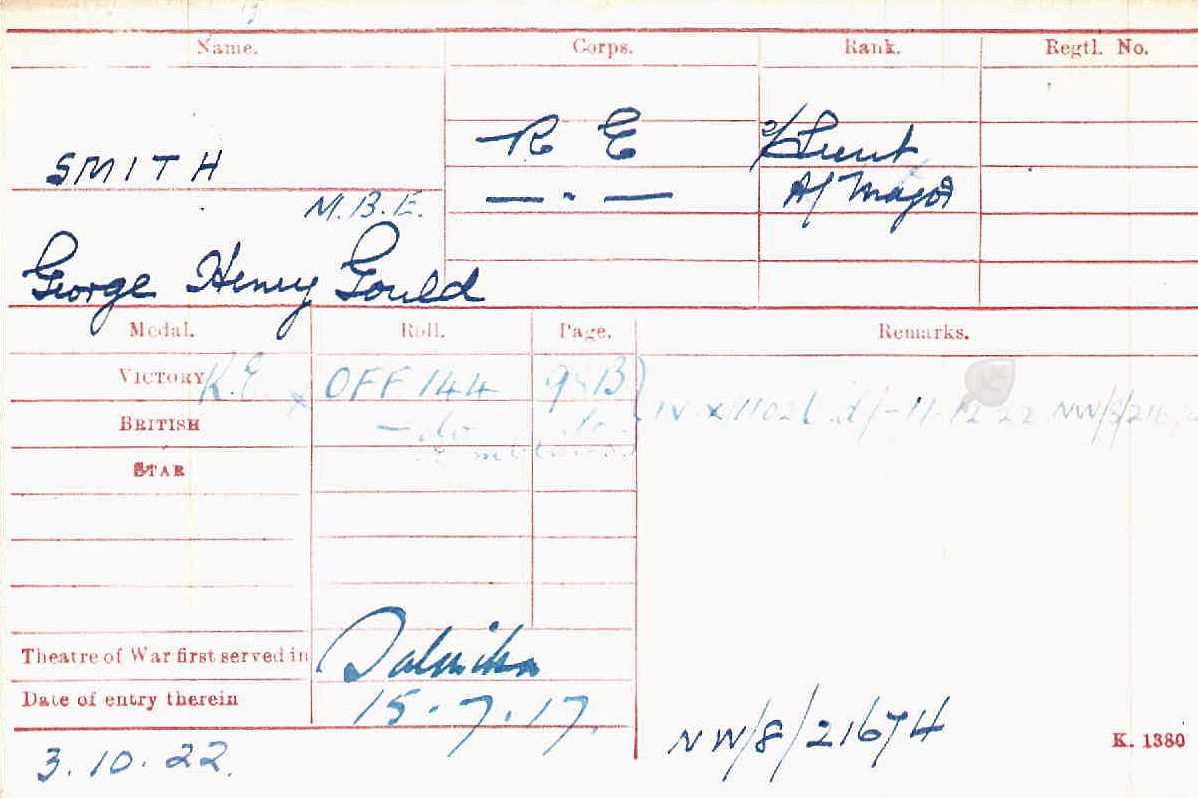
Figure 15. The Front Side of
Major Smith’s Medal Index Card.
(Image courtesy of Ancestry.com)
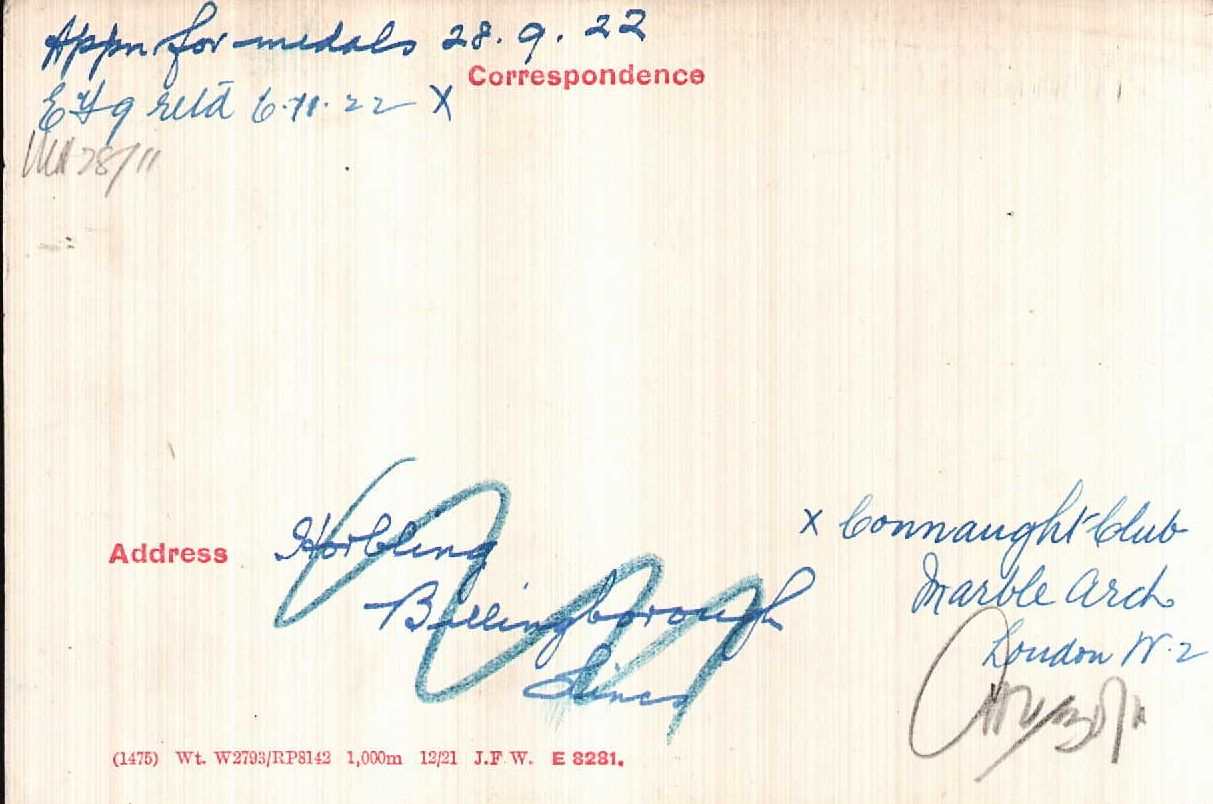
Figure 16. The Back Side of
Major Smith’s Medal Index Card.
(Image courtesy of Ancestry.com)
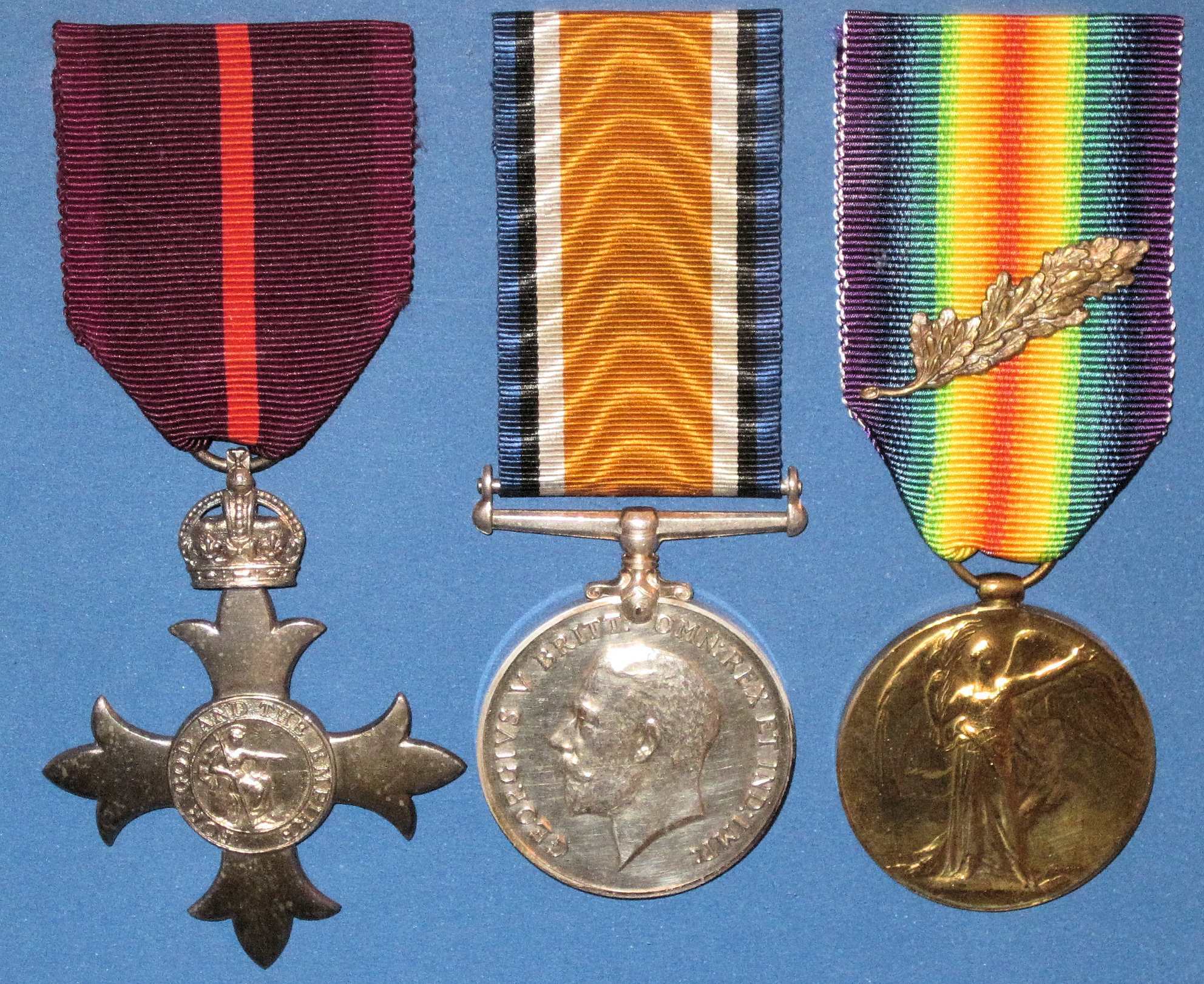
Figure 17. The Medals of
Major George Henry Gould Smith, M.B.E., R.E.
(Photograph from the author’s collection)
8. MARRIAGE AND PERSONAL
INFORMATION
No information has been
uncovered to indicate that G.H.G. Smith ever married.
It appears that over the course of his life he maintained close contact
with his family members in Lincolnshire, claiming Horbling as his home address
even at the time of his death. He
seems to have been particularly close to his sister, Helen Phyllis Gould Smith.
Nothing was uncovered during the research to indicate that he maintained
a close relationship with his brother Francis.
9. RELEASE FROM MILITARY
SERVICE
Major Smith was released from military service on the 16th of September 1919 . His total service was reckoned as shown in the tables below:
Location |
Period
of Service |
|
Home |
9 March 1917 – 26 June 1917 |
|
Salonika |
27 June 1917 – 22 December 1918 |
|
Batoum |
23 December 1918 – 1 September 1919[31] |
|
Home |
2 September 1919 – 16 September 1919 |
Location |
Period
of Service |
|
Home
Service |
108 days |
|
Service
Abroad |
2 years and 188 days |
Total Service |
2 years and 296 days |
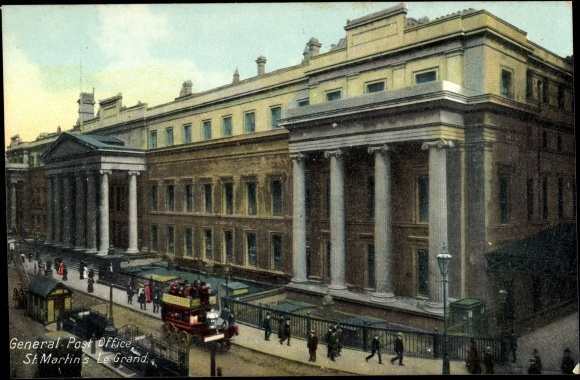
Figure 18. The General Post
Office, London.
(Image courtesy of Google.com)
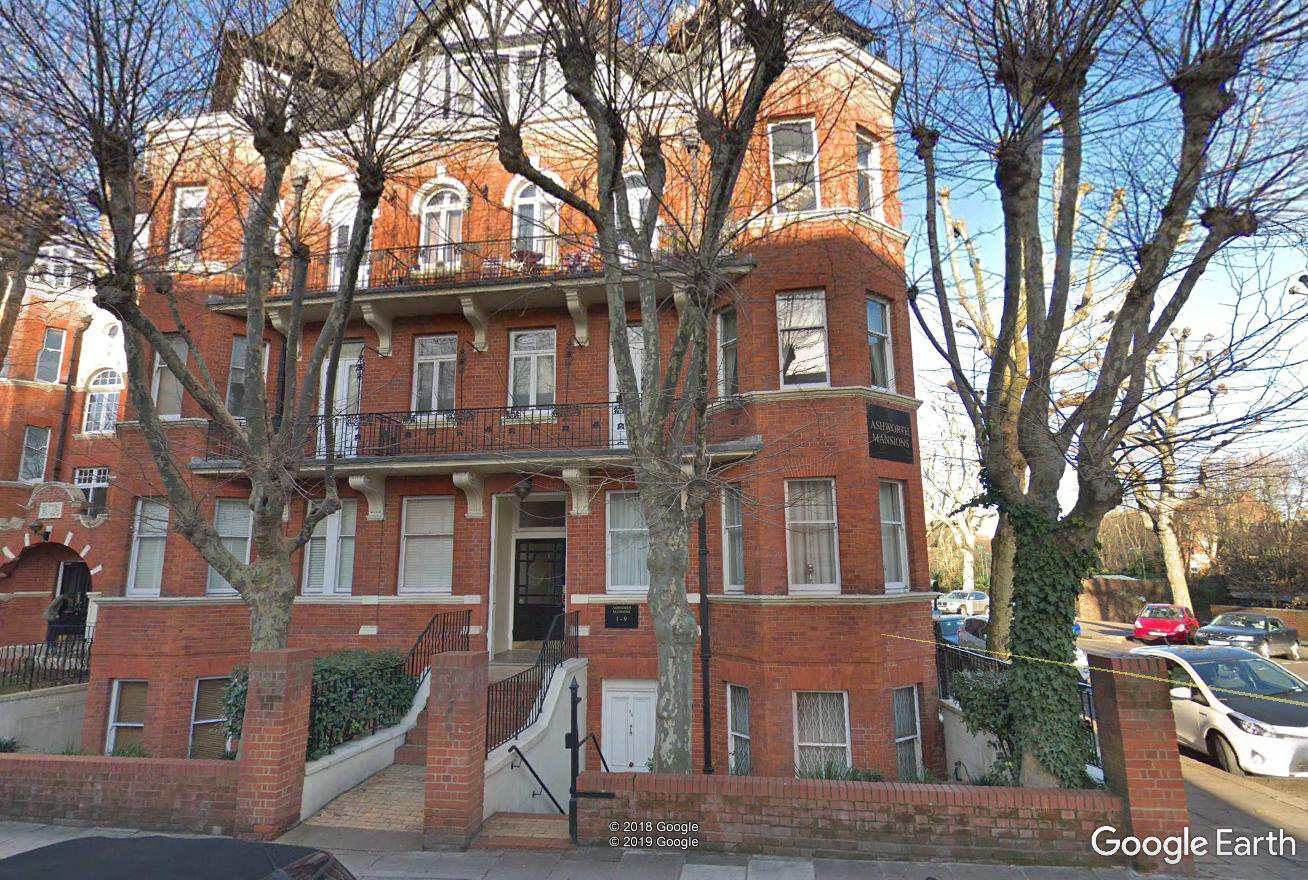
Figure 19. Ashworth
Mansions, Grantully Road, London W.9.
(Photograph courtesy of Google Earth).
By the early 1950s it appears that he was in retirement. On the 20th of March 1954 he departed from London aboard S.S. Chusan bound for Yokohama, Japan. He was a 65-year old first class passenger who listed his occupation as “Retired.” His U.K. address at this time was 8 Avenue Mansions, London, N.W.3. He was a member of the United University Club. The United University Club was a London gentlemen's club, founded in 1821. It occupied the purpose-built University Club House, at 1, Suffolk Street in London.
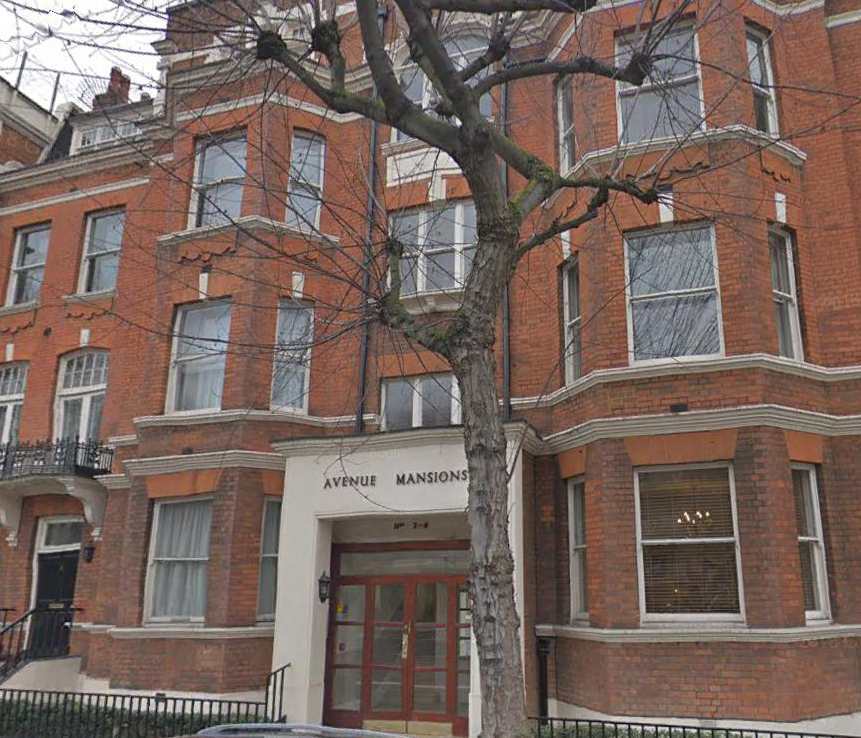
Figure 20. 8 Avenue
Mansions, London, N.W.3.
(Photograph courtesy of Google Earth)
At the time of his death at age 76 on the 26th of
January 1965, George Henry Gould Smith, M.B.E. was living in Suite 50 of the
Princes Hotel in Folkestone, Kent. Up
until 1933 the Princes Hotel was known as Hundert’s Hotel.
Although he was residing in Folkestone, he still maintained his home
address at Horbling Hall, Sleaford, Lincolnshire.
On his death his will was probated at Lincoln and his heirs were listed
as his sister, Helen Phyllis Gould Smith, a widow, and Harry Bowden, a
solicitor. No reference could be
found regarding the relationship between Smith and Bowden.
They were either friends or professional associates.
At the time of his death Smith’s effects amounted to £74,296 (about
$1,933,563 in 2019 U.S. Dollars).
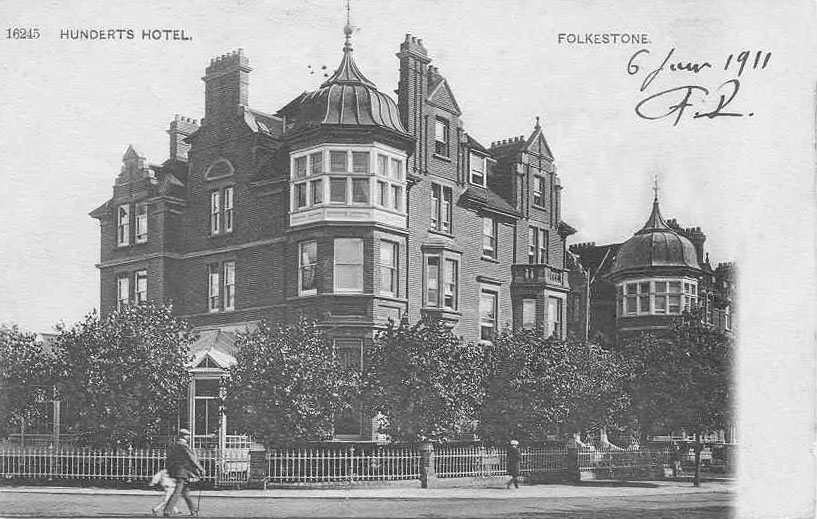
Figure
21. Hundert’s Hotel (later the
Princes Hotel) in Folkestone, Kent.
(Image courtesy of Google.com)
Family Information
On the 18th of January 1891 George Henry’s grandfather, Captain George Smith, passed away.
Smith’s mother, Helen Phyllis Smith, died suddenly after a seizure, on
the 15th of December 1913 at the age of 53.[32]
George Henry was at Oxford University at the time.
On the 17th of October 1931 Smith’s uncle, Henry Smith, died
leaving George Henry the sum of £500 in his will.
At this time George Henry was the Chief Inspector of Postal Traffic at
the General Post Office in London. In
1931 £500 was the equivalent of about
US $3,700 (about US $59,500 in 2019 currency).
George Henry’s father, George Smith, died in February of 1945.
His sister Helen outlived George Henry by about six and a half years.
She died on the 17th of June 1971 at the age of 79.
Her address at the time of her death was Densome Woodgreen, Fordingbridge,
Hampshire. Her will was probated in
Nottingham and her effects amount to £54,091 (approximately $1,028,000 in 2019
US Dollars). The entry in the 1971
Probate Calendar does not indicate her heir or heirs.
George Henry’s brother Francis (“Frank”) G. Smith was born on the
18th of September 1900. The
1939 England and Wales Register shows Francis Gould Smith and his wife Ada C.G.
Smith residing at Horbling Hall in South Kesteven, Lincolnshire.
Francis was a solicitor. The
Register shows that Francis and Ada had two domestic servants, one Mary
Headland, age 28, and one Beatrice Howard, age 19.
A 1939 passenger list shows the couple traveling to South Africa.
Based on a search of Ancestry.com, it is believed that Francis G. Smith
died in September 1964 at Aylesbury, Buckinghamshire.
The last of George Henry Gould Smith’s relatives to be discussed is his younger brother Allison Gould Smith. Allison’s served in the Great War like his brother did, only Allison served in the infantry and gave the last full measure of his life for King and Country. His military service is discussed in detail in Addendum No. 1 below.
The Military Service of Allison Gould Smith, M.C.
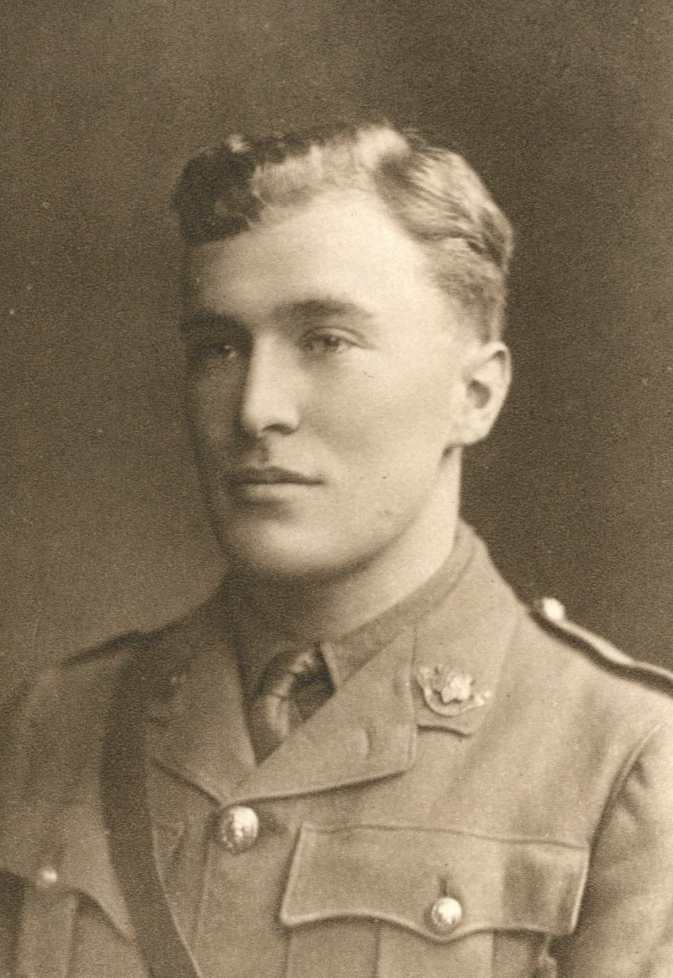
Allison Gould Smith had joined the Inns of Court Officers Training Corps (OTC) in August of 1914. He was commissioned a Temporary 2nd Lieutenant on the 12th of September 1914[33] and he embarked for France on the 17th of July 1915. Although his Medal Index Card shows that he was in the 1st Battalion, this is thought to be in error. He actually was with the 7th (Service) Battalion, which landed at Boulogne as part of the 56th Brigade in the 19th (Western) Division in July 1915 for service on the Western Front.
The 19th (Western) Division was established by the Western Command in September of 1914. The units of the Division initially concentrated in the Bulford area with the infantry being at Tidworth, Ludgershall and Grately. The battalions moved into billets for the winter, in Andover, Whitchurch, Basingstoke and Weston-super-Mare. In March 1915 all units concentrated near Tidworth. Advanced parties left for France on the 11th of July 1915 and the main body crossed the English Channel between the 16th and 21st of July. Units of the division initially moved to the point of assembly near St Omer.[34]
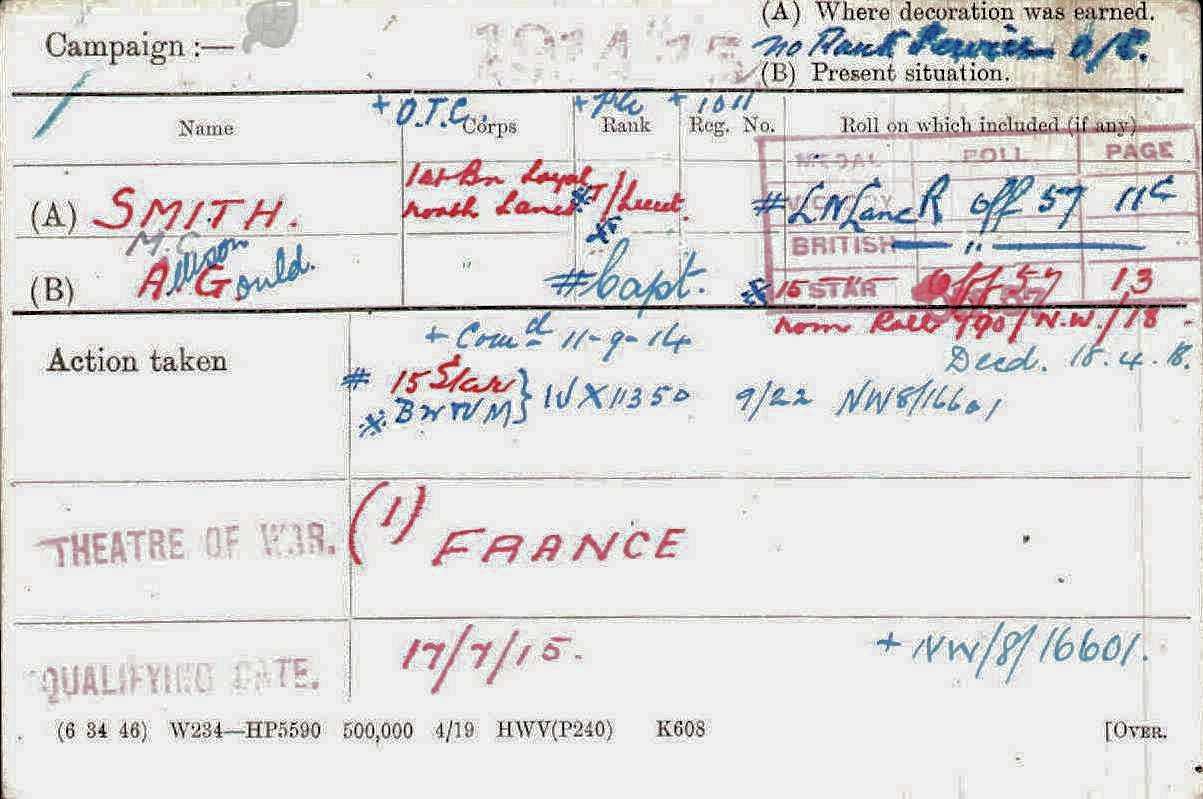
Figure 23. The Medal Index
Card of Captain Allison Gould Smith.
(Image courtesy of Ancestry.com)
Allison Gould Smith served on the Western Front with the 19th
Division. In 1915 the division took
part in the action of Pietre, which was a supporting/diversionary action during
the Battle of Loos.
In 1916 the division was engaged in the Battle of Albert, in which it captured La Boisselle, the attacks on High Wood, the Battle of Pozieres Ridge, the Battle of the Ancre Heights and the Battle of the Ancre. All of these battles were phases of the Battles of the Somme. Lieutenant Allison Gould Smith was severely wounded on the Somme in July of 1916. He recovered from these wounds and was back at the front in May of 1917 with the 7th Battalion, The Loyal North Lancashire Regiment.
In 1917 the 19th Division took part in the Battle of Messines, where Smith distinguished himself by conspicuous skill and gallantry during an attack at Oosttaverne.[35] He then went on to take part in the various phase of the Third Battle of Ypres, which included the Battles of Menin Road Ridge, Polygon Wood, Broodseinde, Poelcapelle and the first and second battles of Passchendaele.[36]
On the 1st of January 1918 Temporary Captain Allison Gould Smith was awarded the Military Cross (M.C.). He went on to participate in the battles in the spring of 1918 to include St. Quentin (21 March), Bapaume (24-25 March), Messines (10-11 April), Bailleul (13-15 April) and the First Battle of Kemmel Ridge (17-19 April). On the 18th of April the enemy had opened the second stage of their great offensive and Captain Smith’s company, which was in position at Givenchy, was overrun by the German attacking force and isolated.
It was during this last battle that he was severely wounded and died of those wounds. His death is commemorated at the cemetery at Loos. He was 27 years old at the time of his death. His brother, George was an Acting Captain serving as the Deputy Assistant Director of Postal Services for the British XII Corps in Salonika at the time of Allison’s death. Allison was not married, so his death would have been reported to his parents. George probably received notification of his younger brother’s death from his parents.
Apparently Allison’s body was not recovered immediately. The following notice was published in the Lincolnshire Echo, dated the 1st of May 1918:[37]
LOCAL
OFFICER MISSING – We regret to leanr that Captain A. G. Smith (Lancashire
Fusiliers), second son of Mr. George Smith, solicitor, Horbling is reported
“missing.” It is known that he was engaged in recent severe fighting
and that he and a small detachment of men were cut off from the main body, two
only remaining. Further news of this valiant young officer is anxiously awaited.
There is an error regarding his regiment in this notice, as Smith was not
serving in the Lancashire Fusiliers at the time of this death.
The Commonwealth War Graves Commission CWGC) clearly indicates that he
was serving in the 7th Battalion of The Loyal North Lancashire
Regiment. The CWGC commemoration
reads as follows”
“In
memory of Captain Allison Gould Smith, MC, 7th Bn., The Loyal North
Lancashire Regiment who died on 18 April 1918 Age 27.
Son of George and Helen Phyllis Smith, of Horbling, Billingborough, Lincs.
Educated at Winchester College and Magdalene College, Cambridge.
Remembered with honour, Loos
Memorial.”
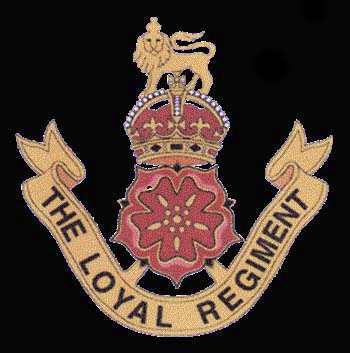
Figure 24.
The Badge of The Loyal North Lancashire Regiment.
(Image courtesy of Wikipedia)
Allison Gould Smith’s will was probated at London on the 6th
of September 1919. His effects were
left to his father, George Smith, in the amount of £1,120 14s (about US $67,814
in 2019 US Dollars).
ADDENDUM NO. 2
A Resumé of the
Service of George Henry Gould Smith, M.B.E., R.E.
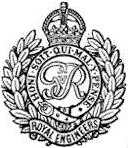
NAME:
George Henry Gould Smith
NUMBER:
N/A
RANK: Major
CORPS: Royal Engineers
PLACE
OF BIRTH:
Horbling, Folkingham, Lincolnshire.
DATE OF BIRTH:
22 February 1889
EDUCATION: Winchester College and
Magdalene College, Oxford. Bachelor
of Arts.
CIVIL
OCCUPATION:
Civil Service.
SERVICE IN THE RANKS:
None.
COMMISSIONING
DATE: 15 March 1917 (with date of rank of 9 March 1917).
COMMISSIONED
AT:
London.
UNITS: Royal Engineers Postal
Service.
HOME
STATIONS:
None. On leave in preparation
for movement abroad and later for demobilization.
STATIONS
ABROAD:
Salonika, Greece; Kavala, Greece; Dedeagatch, Greece; Batoum, Russia.
CAMPAIGNS: The Macedonian Front at
Salonika and with the British Army in Batoum, Russia during the White
Russian/Red Russian conflict.
SERVICE
WITH OTHER REGIMENTS:
None.
MEDALS: Member of the Order of the
British Empire (Military Division), British War Medal and Victory Medal with
Mention in Despatches.
MILITARY
DUTIES: Army
Base Post Office, Salonika. British
12th Army Corps as Deputy Assistant Director of Postal Services.
Postal Officer, Army Post Office 5X23, Kavalla.
Postal Officer, Army Post Office APO 5X9, Dedeagatch.
Deputy Assistant Director of Postal Services
at Headquarters, Batoum Base.
DATE
DISCHARGED OR RELINQUISHED COMMISSION:
16 September 1919
PERIODS
OF SERVICE OVERSEAS:
2 years, 2 months, 20 days.
HOME: 3 months, 18
days.
TOTAL:
2 years, 6 months, 8 days.
CIVIL
APPOINTMENTS:
Assistant Surveyor (2nd Class), General Post Office.
Second Class Clerk in the Post Office Secretary’s Office.
Private Secretary to the Postmaster General.
Chief Inspector of Postal Traffic. Assistant
Secretary to the Director of Postal Services.
RESIDENCES: 28 Dorset Road, Bexhill, East Sussex; Connaught Club, 75 Seymour Street, Marble Arch, London; Horbling, Folkingham, Lincolnshire; 59 Ashworth Mansions, Grantully Road, London. 8 Avenue Mansions, London. Suite 50, Princes Hotel, Folkestone, Kent.
Books
1.
HAYWARD, J.B.
Army Honours and Awards.
J.B. Hayward & Son, London, reprint of the 1920 edition, p. 219.
2.
CRAIG,
E.S. (ed.). Oxford University Roll of Service.
Clarendon Press, Oxford, 1920, p. 283.
3.
MAGDALEN
COLLEGE. The Magdalen College Record. Sixth
edition. Oxford University Press,
Oxford, 1967, p. 199.
Census Data
1.
1891
Census of England.
2.
1901
Census of England.
3.
1911
Census of England and Wales.
Internet
Web Sites
1.
Historical
Currency Conversion web site: https://www.uwyo.edu/numimage/currency.htm
2.
The
Long, Long Trail: 19th (Western) Division.
https://www.longlongtrail.co.uk/army/order-of-battle-of-divisions/19th-western-division/
3.
National
Army Museum. Salonika Campaign.
https://www.nam.ac.uk/explore/salonika-campaign
4.
The
Salonika Campaign – A Postal History 1915-1918, Part I by Chris Grimshaw.
www.forcespostalhistorysociety.org.uk/society/the-salonika-campaign-regis.pdf
5.
Wikipedia.
British Salonika Army. https://en.wikipedia.org/wiki/British_Salonika_Army
6.
Wikipedia.
George Milne, 1st Baron Mile.
https://en.wikipedia.org/wiki/George_Milne,_1st_Baron_Milne
7.
Wikipedia.
Honour Moderations web site. https://en.wikipedia.org/wiki/Honour_Moderations
8.
Wikipedia.
Literae
Humaniores web site. https://en.wikipedia.org/wiki/Literae_humaniores
9.
Wikipedia.
Macedonian Front. https://en.wikipedia.org/wiki/Macedonian_Front
1
Midlands Miscellany.
The Family of Henry Smith, JP, DL of Horbling (1820-1891). https://jamesbroun.wordpress.com/2016/07/04/the-family-of-henry-smith-jp-dl-of-horbling-1820-1891/
1
Period Paper web
site: https://www.periodpaper.com/
1
South Lincolnshire
War Memorials. https://www.southlincolnshirewarmemorials.org.uk/our-villages/horbling/allison-gould-smith/
1
Wikipedia.
The Battle of Messines (1917): https://en.wikipedia.org/wiki/Battle_of_Messines_(1917)
1
Wikipedia. Horbling
and Folkingham. https://en.wikipedia.org/wiki/Folkingham
1
Winchester
College web site: http://www.winchestercollegeatwar.com/archive/allison-gould-smith/
WorthPoint
web site. https://www.worthpoint.com
London
and Edinburgh Gazette
1.
The London Gazette, 1
November 1912, p. 8034.
2.
The London Gazette, 3
January 1913, p. 51.
3.
The Edinburgh
Gazette, 7 January 1913, p. 26.
4.
The
London Gazette, 11 September 1914, pp. 7223 and 7224.
5.
The
London Gazette, 13 March 1917, p. 2526
6.
The
London Gazette, 1 January 1918, pp. 30 and 46.
Military Organizations
Imperial War Museum.
Passenger Lists
Passenger
List, S.S. Chusan, 20 March 1954.
Registers
1.
Commonwealth War
Graves Commission.
2. London Electoral Registers, 1922-1939.
3.
England and Wales
National Probate Calendar (Index of Wills and Administration), 1858-1995, Year
1919, p. 326.
4.
England and Wales
National Probate Calendar (Index of Wills and Administration), 1858-1995, Year
1965, p. 475.
5.
England and Wales
National Probate Calendar (Index of Wills and Administration), 1858-1995, Year
1971, p. 325.
Service Papers
1.
Minute Sheet dated 6
March 1917, A.G. 7 to M.S. 1.
2.
Minute Sheet dated 16
September 1919, M.S. 4.
3.
Final Letter of
Demobilization, 7 November 1919.
4.
Letter from the War
Office to the Director of Army Postal Service (Home) dated 20 March 1917, re: 2nd
Lieutenant G.H.G. Smith.
5.
Protection
Certificate (Officer) (Army Form Z. 3.)
6.
Letter from the
Postmaster General to the Director, Army Postal Service (Home) dated 1 March
1917, re: Commission of G.H.G. Smith.
7.
Casualty Form –
Active Service.
8.
Application for
Appointment to a Temporary Commission in the Regular Army for the Period of the
War, Form M.T. 393, including medical examination, 27 February 1917.
9.
Medal Index Card (G.H.G.
Smith).
1
Medal Index Card
(A.G. Smith).
[1] Midlands Miscellany.
[2] Ibid.
[3] Horbling is a village and civil parish in the South Kesteven district of Lincolnshire, England. It lies is located 7 miles south-east of Sleaford, 14.5 miles north-east of Grantham and 0.5 miles north of Billingborough.
[4] National Archives RG12/2556.
[5] Although not typically a man’s given name, Allison appears to have been named using his mother’s maiden name.
[6] National Archives RG13/3024.
[7] Today Sandroyd School is an independent co-educational preparatory school for both day and boarding pupils located on the Wiltshire/Dorset border, near the village of Tollard Royal in Wiltshire. The school is located in the centre of Rushmore Park and is surrounded by playing fields, woods and parkland.
[8] Honour Moderations (or Mods) are a set of examinations at the University of Oxford at the end of the first part of some degree courses (e.g., Greats or Literae Humaniores). Honour Moderations candidates have a class awarded (hence the 'honours'). However, this does not count towards the final degree. In other courses, Prelims (i.e., preliminary examinations) are the first set of examinations but have no class awarded for them. These first examinations are termed 'First Public Examinations'. Having passed the First Public Examinations, students take a course leading to the 'Second Public Examinations', more commonly known as Finals. Finals are held at the end of all first degree courses at Oxford for arts subjects and may be split into examinations after the second, third and, if applicable, fourth year for some science subjects. Honour Moderations in Classics has been called one of the hardest examinations in the world. However, in recent years, the subject matter has been changed so that proficiency in both Latin and Greek languages is no longer required and the number of papers in the exam has been reduced, along with an extension in the time allowed to finish.
[9] Literae humaniores, nicknamed greats, is an undergraduate course focused on classics (Ancient Rome, Ancient Greece, Latin, ancient Greek, and philosophy) at the University of Oxford and some other universities. The Latin name means literally "more human literature" and was in contrast to the other main field of study when the university began, i.e. res divinae, also known as theology. Lit. hum. is concerned with human learning, and lit. div. with learning that came from God. In its early days, it encompassed mathematics and natural sciences as well. It is an archetypal humanities course. The University of Oxford's classics course, also known as greats, is divided into two parts, lasting five terms and seven terms respectively, the whole lasting four years in total, which is one year more than most arts degrees at Oxford and other English universities. The course of studies leads to a Bachelor of Arts degree. Throughout, there is a strong emphasis on first hand study of primary sources in the original Greek or Latin. In the first part (honour moderations or mods) students concentrate on Latin and/or Greek language; in the second part students choose eight papers from the disciplines of classical literature, Greek and Roman history, Philosophy, Archaeology, and Linguistics. The teaching style is very traditional and consists of weekly tutorials in each of the two main subjects chosen, supplemented by a wide variety of lectures. The main teaching mechanism remains the weekly essay, one on each of the two main chosen subjects, typically written to be read out at a one-to-one tutorial; this affords all students plenty of practice at writing short, clear, and well-researched papers.
[10] The Gould middle name of the boys came from the fact that on the 16th of April 1846, Henry Smith, son of Francis Smith, married Mary, daughter of James Gould, at Sempringham in Lincolnshire.
[11] Winchester College web site.
[12] Midlands Miscellany.
[13] The Magdalene College Record.
[14] Winchester College web site.
[15] The London Gazette, 11 September 1914, pp. 7223 and 7224.
[16] Visual acuity is measured using the Snellen scale. A Snellen test usually consists of a number of rows of letters which get smaller as one reads down the chart. On the Snellen scale, normal visual acuity is called 6 / 6, which corresponds to the bottom or second bottom line of the chart. If one can only read the top line of the chart then this would be written as 6 / 60. This means one can see at 6 metres what someone with standard vision could see from 60 metres away. The figures 6 / 60 or 3 / 60 are how the result of a Snellen test are written. The first number given is the distance in metres from the chart it is read.. Usually this is a 6 (for 6 metres) but would be 3 if one were to sitting closer to the chart (3 metres away). The second number corresponds to the number of lines that one is able to read on the chart. The biggest letters, on the top line, correspond to 60. As one reads down the chart, this number gets smaller as it correspond to the lines with smaller letters. Someone with standard vision can read towards the bottom of the chart. Standard vision can be referred to 6 / 6 vision. For example, if the second line of the chart was marked as the 36 line, a person with standard vision (6 / 6) would be able to read this line on the chart when it was 36 metres away. However, if one had a Snellen score of 6 / 36, one would only be able to read the same line at 6 metres away. In other words the person would need to be much closer to the chart to be able to read it. Generally the larger the second number is, the worse the person sight is.
[17] Application for a Temporary Commission.
[18] The London Gazette, 13 March 1917, p. 2526.
[19] Minute Sheet dated 6 March 1917.
[20] Wikipedia. Macedonian Front.
[21] Casualty Form – Active Service.
[22] Field Marshal George Francis Milne, 1st Baron Milne, GCB, GCMG, DSO (5 November 1866 – 23 March 1948) was a senior British Army officer who served as Chief of the Imperial General Staff (CIGS) from 1926 to 1933. He served in the Second Boer War and during the First World War he served briefly on the Western Front but spent most of the war commanding the British forces on the Macedonian front. As CIGS he generally promoted the mechanization of British land forces although limited practical progress was made during his term in office.
[23] Typical of the parsimonious attitude of the War Office in many instances during the Great War.
[24] Casualty Form – Active Service.
[25] Smith’s Casualty Form contains an entry dated “London Gazette 12 October 1918” with no explanation as to why this entry was made on the form. A search for G.H.G. Smith in the London Gazette of that date did not find his name mentioned. As his Victory Medal was worn by him with a Mention-in-Despatches oak leaf, it is possible that his MID was gazetted on this date.
[27] Midlands Miscellany.
[28] Casualty Form – Active Service.
[29] Prince Albert was the driving force behind this exhibition and the construction of the Crystal Palace.
[30] These medals are in the author’s collection.
[31] The 1 September 1919 date is an approximation made by the author.
[32] Midlands Miscellany.
[33] The London Gazette, 11 September 1914, p. 7223.
[34] The Long, Long Trail: 19th (Western) Division.
[35] Winchester College web site.
[36] The Long, Long Trail: 19th (Western) Division.
[37] South Lincolnshire War Memorial.